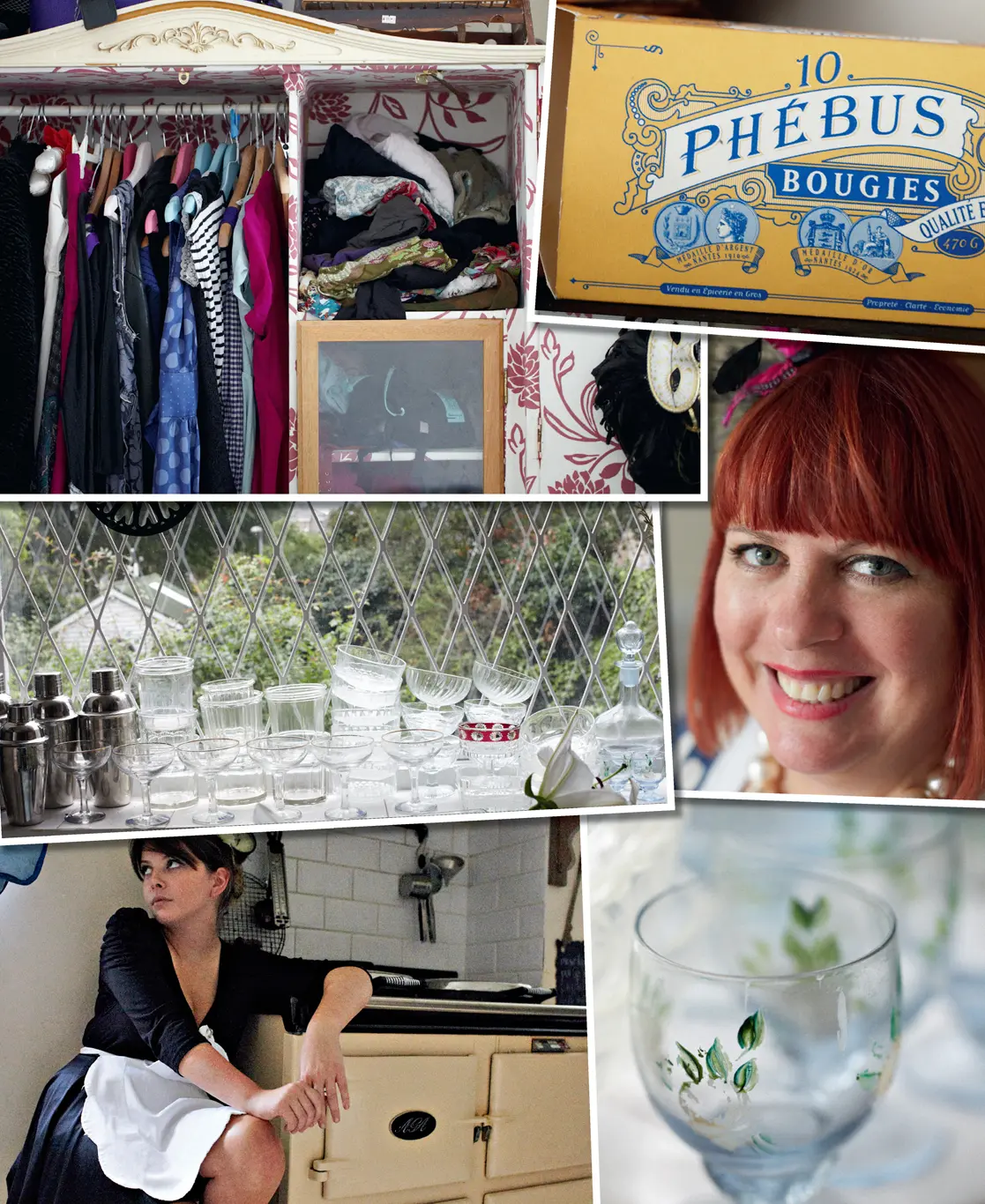
Another type of ‘pop-up’ is Latitudinal Cuisine, organised by architect Alex Haw. Nobody pays; it’s based on participation. Every week a supper is held at a different house and the guests bring a dish based on the latitude or longitude announced in a lengthy e-mail essay by Alex. The week I went, this included an eclectic menu based on places ranging from Graz in Austria, the Congo and Svalbard, to Bari in Italy, Sweden and Libya.
For Sam Bompas, of food event artists Bompas & Carr, a pop-up restaurant is an installation, a mix of art and food. He’s held events experimenting with glow-in-the-dark jelly, the history of food, a breathable cocktail and a ‘parliamentary’ pop-up that served cocktails and food and held debates around the time of the election. Each event is innovative and researched. Sam obviously has his ear to the ground in the food world, as he attended my very first dinner, bringing along jellies for the guests.
Pop-up restaurants also include legitimate outdoor pop-ups in marquees, such as The Griffin, which opens to the public for six weeks every summer round the back of Grays Inn, London. This pop-up is more legal than most; its clients are usually barristers and judges.
Variety
There is a huge variety of styles of underground restaurant. Some operate weekly, some monthly, some just when they feel like it. The locations can vary from a council flat, a suburban semi, a bedsit, a château, a shed, a boat, a warehouse. Some underground restaurants can feed 50 people at a time; others are more intimate affairs of 6–10 people. I’ve even held private dinners for two in my garden shed!

The phenomenon is very site specific. Each underground restaurant is as individual as its host…and you have the freedom to fit it around your lifestyle. The style will depend on your space, even the amount of knives and forks you own…
David Clasen serves only 12 people because he happens to own just 12 place settings, three tables and a tiny kitchen. I have a large Victorian garden flat, so can fit up to 30 people at a time in my living room. When the weather is good, we can spill out into my garden and balcony. I host my evenings on a Saturday because my daughter is at school during the week and I felt it might be a little distracting for her to arrive home from school on a weekday faced with a horde of strangers in the living room.
Horton Jupiter can fit 10 people comfortably in his council-flat living room. Horton is in a band, ‘They came from the stars, I saw them…’ and therefore needs weekends off for gigs.
Artist Tony Hornecker’s extraordinary studio space, a little crooked house in the back streets of the East End (soon host to the 2012 Olympics, let’s really show the world how we entertain, eh?), displays his talents as a set designer. The food, although good, is almost secondary to the setting. He sits diners all over his house; couples can even book his bedroom!


Why Start a Supper Club?
Do you make money from a home restaurant? Not much. The home chef hasn’t got access to trade discounts and suppliers because they order in only small amounts. Even so, as the banking system collapsed and parliamentary democracy trembled in the wake of financial scandal, were supper clubs a response to the recession?
Many of the home-restaurant chefs certainly started up because of financial necessity. I’m a single mother, raising a child on a low income. This is a way of starting my own business from my home. Working away from home is always an issue for parents, particularly mothers, so a home restaurant is a perfect entrepreneurial match.
But it has its problems too: the rest of your family must become accustomed to sharing their private space with strangers. There are sacrifices. These I will elaborate on later in the book.
Tony Hornecker, on why he started his home restaurant, The Pale Blue Door, in his studio, says that ‘because of the recession, I wasn’t getting any work. I was literally living on onions. Now at least I can pay my rent.’
While it is probably no coincidence that the ubiquity of supper clubs in Buenos Aires increased in the wake of their financial crisis in 2003, more important, I believe, than the ‘recession story’ is the opportunity to socialise. Most home restaurants are based in big cities, where, despite the crowds, it’s hard to get to know other people. One of the things that surprised me at first was the social-networking aspect of my underground restaurant. As the weeks went on, I realised that larger mixed tables worked better than many small tables. Part of the attraction was meeting other people face to face, people that you may so far have ‘met’ only on the Internet. Even though you are with people you don’t know, there is an instant connection, you are all strangers in a strange land, and there are common subjects – the food, the house, and the cook – to talk about.
It’s also great for lone diners. Women in particular may feel uncomfortable going alone to a restaurant on a Saturday night. Large mixed tables remove the stigma, the embarrassment of dining alone publicly. You won’t feel like a saddo!
The first home-restaurant marriage surely is not far away. (Although once, a couple who had got together six weeks previously at Horton Jupiter’s restaurant split up while at my restaurant. As the hostess, I was left with the responsibility of making sure the abandoned, drunk and scantily dressed ex-girlfriend got home safely.)

I must admit, in the back of my mind, I thought I could meet someone through my supper club. The reality is that I’m too busy in the kitchen, perspiring the welcome cocktail, staggering around in heels and a smeared apron, and shouting at people, for this to have been a successful romantic venture.
In a sense, a home restaurant, which celebrates the oldest communal activity in the world – eating dinner together – has been made possible by the Internet, by new media. It’s turning the virtual into the real.
I had been blogging about food for a couple of years before starting The Underground Restaurant. I mentioned in a post that it was about to open and was delighted that some readers immediately requested an invitation.
From the beginning, The Underground Restaurant has been open to complete strangers, people I have never met. Other supper clubs trod more warily, with a long period entertaining friends and acquaintances before opening up to the public. I remember Horton announcing, slightly nervously, on Facebook, two months after opening, ‘This is the first evening that nobody I know will be coming!’
Some supper-club hosts vet their guests carefully. I had problems getting a reservation at one when I booked in my real name, sending at least ten e-mails without reply. When I booked under MsMarmiteLover, I immediately got a reply: ‘You should have said who you were,’ he announced, ‘You would have got in straight away!’ This supper-club host doesn’t want lone diners who ‘make everybody feel uncomfortable sitting there on their own,’ or anybody that he considers would not ‘fit in’. This host is as exclusive as I am inclusive. As I said, everybody has their own style.
Читать дальше

















